Culture of the Middle Ages. The most ancient books in Europe
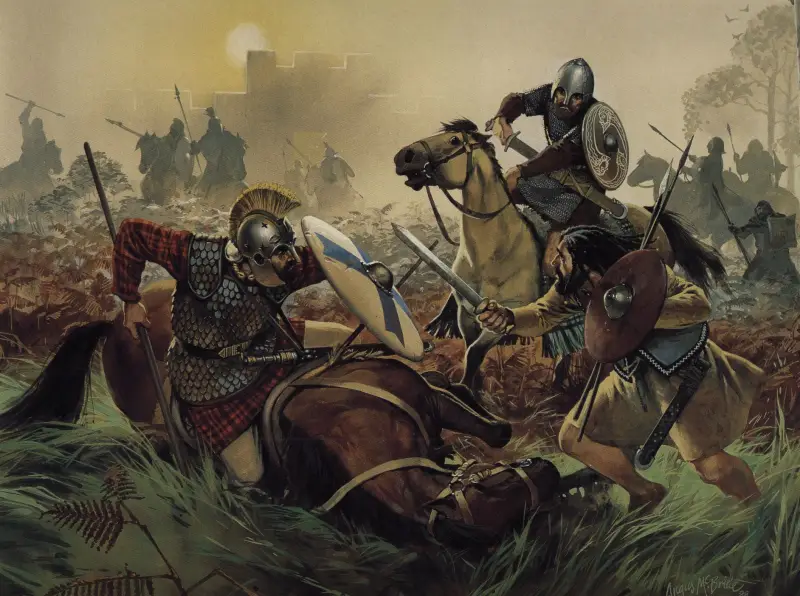
Barbarians fight the Romans. Illustration by Angus McBride
and the Word was with God,
and the Word was God.
Gospel of John 1:1
Culture and people. We begin the story about the culture of the Middle Ages (about which we have somewhat forgotten) from 476 AD - the period when the Western Roman Empire disappeared into oblivion. This was a severe blow to ancient culture, which was replaced by the culture of barbarians who migrated to Europe. However, the influence of Rome was so strong that they, these same barbarians, became very Latinized, began to speak “barbarian Latin”, and already at the beginning of the XNUMXth century accepted the Christian faith. Barbarian kingdoms arose in the former territory of the empire.
But in general, the culture was greatly degraded, many technologies were forgotten, and people’s lives became very simple. But although the Roman Empire in the West perished, the papacy, individual monasteries, as well as books written earlier, survived. First of all, we will talk about books.
As a rule, the books of that time were mainly translations of the Bible and Gospels, and they served the purpose of spreading the faith of Christ among the new pagan flock. These manuscripts were called codices.
Today, scientists know of 322 manuscripts with the texts of the New Testament, written in uncial script* only in Greek and dating back to the XNUMXrd–XNUMXth centuries. ad. That is, the “Dark Ages” in Europe were not really that dark, if during this time people continued to write and rewrite books.
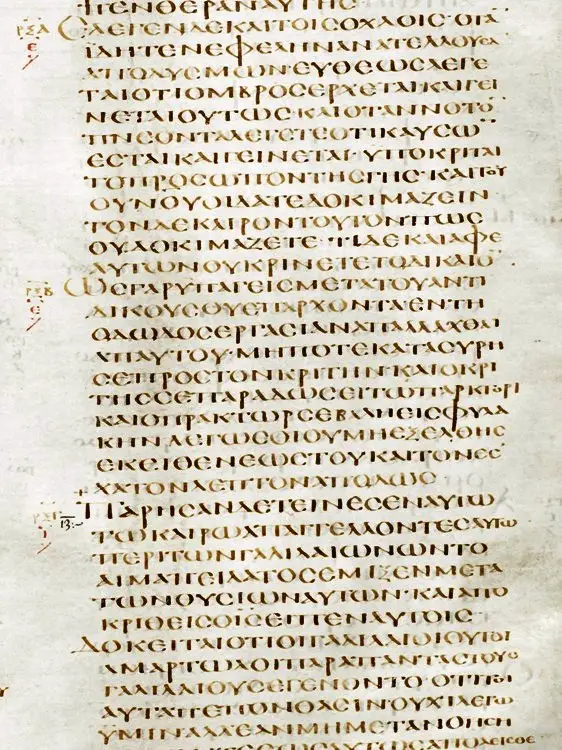
Fragment of the Gospel of Luke (12:54–13:4). The Codex Alexandrina is one of the oldest manuscripts containing the text of the Bible, written in Greek and dating back to the XNUMXth century AD. British Library, London
And also magnificent and expensive manuscripts, made of purple-painted parchment and with text written in gold and silver on biblical themes, were created from the 4th to the 6th centuries, for example, in Northern Italy. And not in one place, but in different workshops, that is, the complex and expensive technique of creating such books was by no means forgotten!
But it was at this time that there were wars there, and power changed at least four times. The Goths of Odoacer, the Byzantines, the Lombards - whoever encroached on these lands, with the capture of cities and widespread robberies. But despite all this, apparently, wealthy customers for such books continued to exist, as did the conditions for the creation of such masterpieces.
It was only after the creation of the kingdom of the Lombards that the production of “purple codices” for some reason immediately stopped, and we don’t know the answer why.
One of the 25 “purple codices” that have come down to us is an Old Latin version of the Gospel, made in Italy in the 419th century. It is currently preserved in Brescia (hence the name "Codex from Brescia") in the Civic Library of Ceriniana (on display in the Museum of Christian Art). The manuscript contains XNUMX leaves, colored in purple, covered with silver and gold ink, and decorated with arches at the bottom of the sheet.
It is interesting that, judging by the verses of the monk-scribe Godescalc (8th century, designer of the “Godescalc Gospel”), the manuscripts on purple parchment also had some symbolic meaning:
The purple backgrounds here are covered with gold;
With the scarlet blood of the thundering one, the kingdom is opened to heaven;
The starry palace promises us the joys of heaven;
The word of the Lord shines solemnly in a bright radiance.
God's covenants, dressed in scarlet roses,
We are made to participate in the sacrament of His blood.
In light gold sparks and delicate silver shine
The mysterious white virginity of heaven descends upon us...
(Translation by O. A. Dobiash-Rozhdestvenskaya).
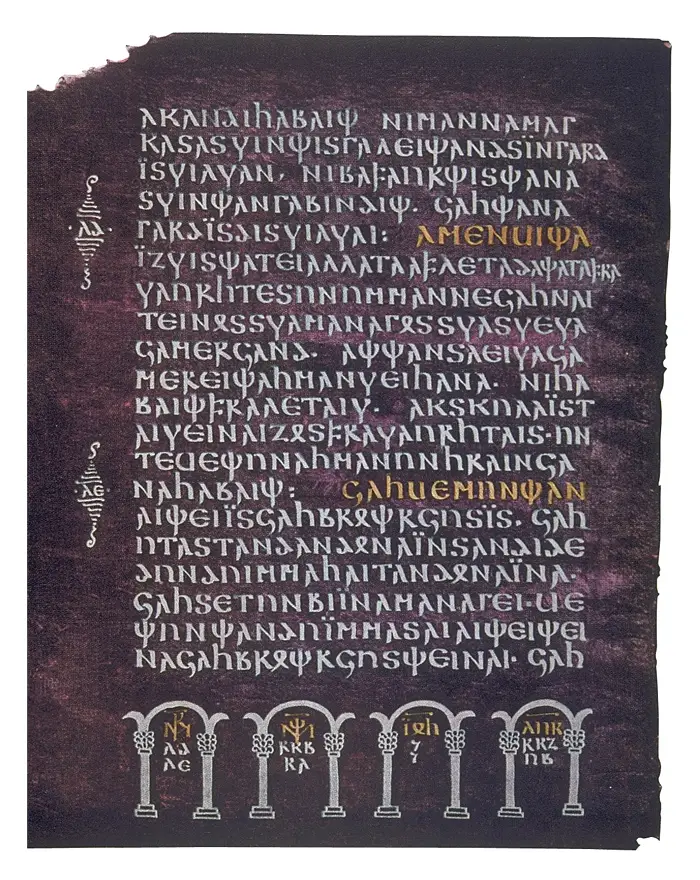
One of the pages of the Silver Code. The purple color of the parchment has changed its color over time, but the text written in silver ink is still clearly visible today. Uppsala University Library, Sweden
The “Silver Codex”, containing the text of all four Gospels, which was prepared for the Ostrogoth king Theodoric the Great at the beginning of the 6th century, was also written on purple parchment, and it was written in Gothic. Most likely, its creator (or creators) were familiar with the “Code from Brescia”, because they tried to make their code no worse, and they succeeded.
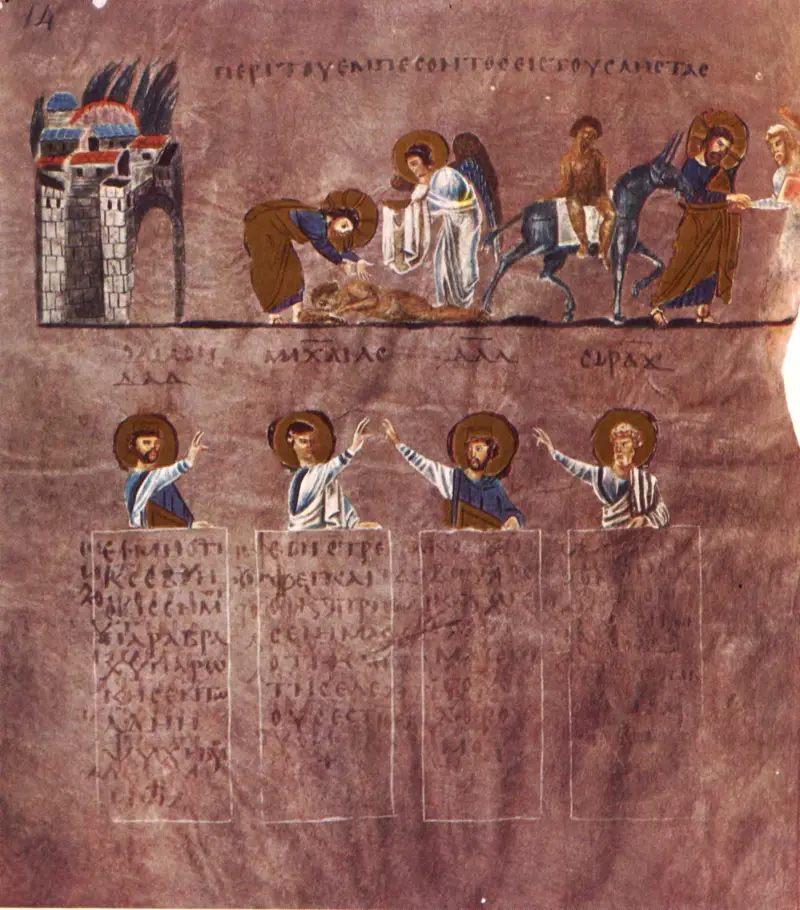
Page 7 of the Rossano Codex. Purple has changed its color over time. The miniatures depict the parable of the Good Samaritan. Diocesan Museum of Sacred Art of Rossano
Also among the luxurious “purple codices” is the “Rossano Gospel” (“Rossan Codex”) of the 336th century: the thin parchment is painted purple, and the text is written in gold and silver ink. It originally contained 188 sheets, but only XNUMX of them have survived to this day.
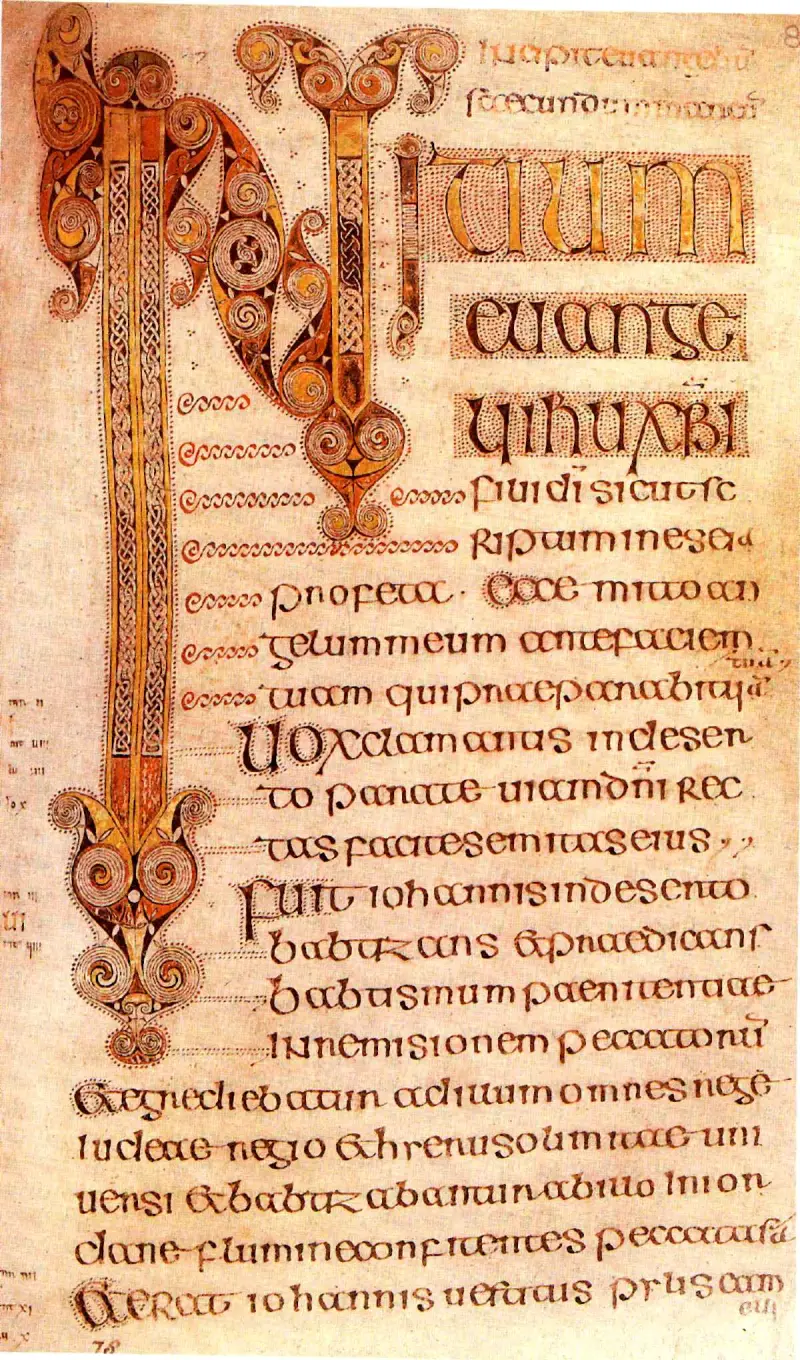
"The Book of Durrow". The beginning of the Gospel of Mark. Trinity College Library, Dublin
One of the ancient manuscripts of evangelical content that has survived to this day is the Book of Durrow (650–700). Moreover, it is also considered one of the oldest illuminated manuscripts of medieval Europe.
It is not known exactly where it was created. Both the island of Iona and Lindisfarne Abbey are named. Moreover, its special value lies not in its text itself, but in 12 intertwined initials (the first letter in the text), which are so large that they occupy most of the page and represent completely unique examples of illustration from a time so distant from us.
There are also five miniatures depicting the four Evangelists and John the Baptist, the size of a full page, and another six so-called carpet pages, entirely of ornaments alone.
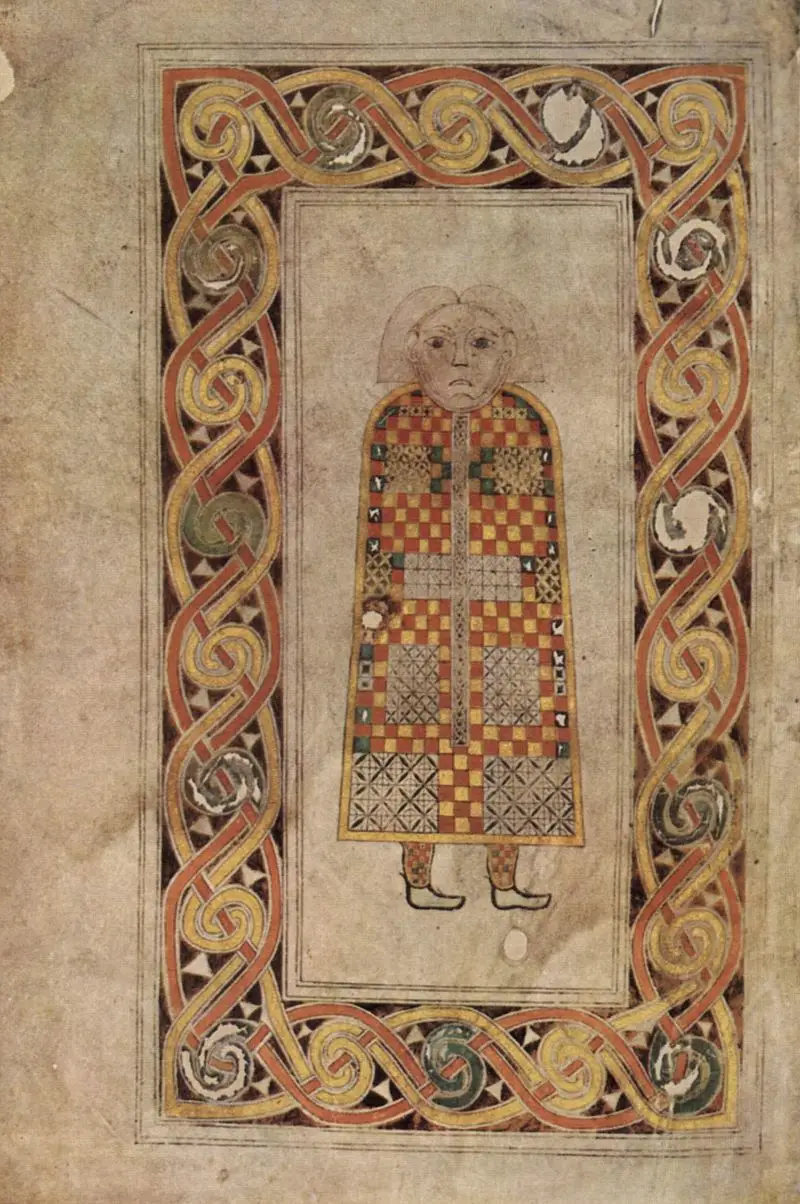
Image of a man in the Book of Durrow. Trinity College Library, Dublin
The “carpet” pages are covered with amazingly complex Celtic designs, executed with amazing skill. I just can’t believe how you can draw all this so neatly and clearly with just your hands and hair brushes. Both gold and silver inks are widely used, and this is the first time they have been used for illuminated text.
And it is also important because it contains the text that formed the Roman Catholic Church, and it used it for more than 1 years. And remains the basis of the Bible for today's Christian church.
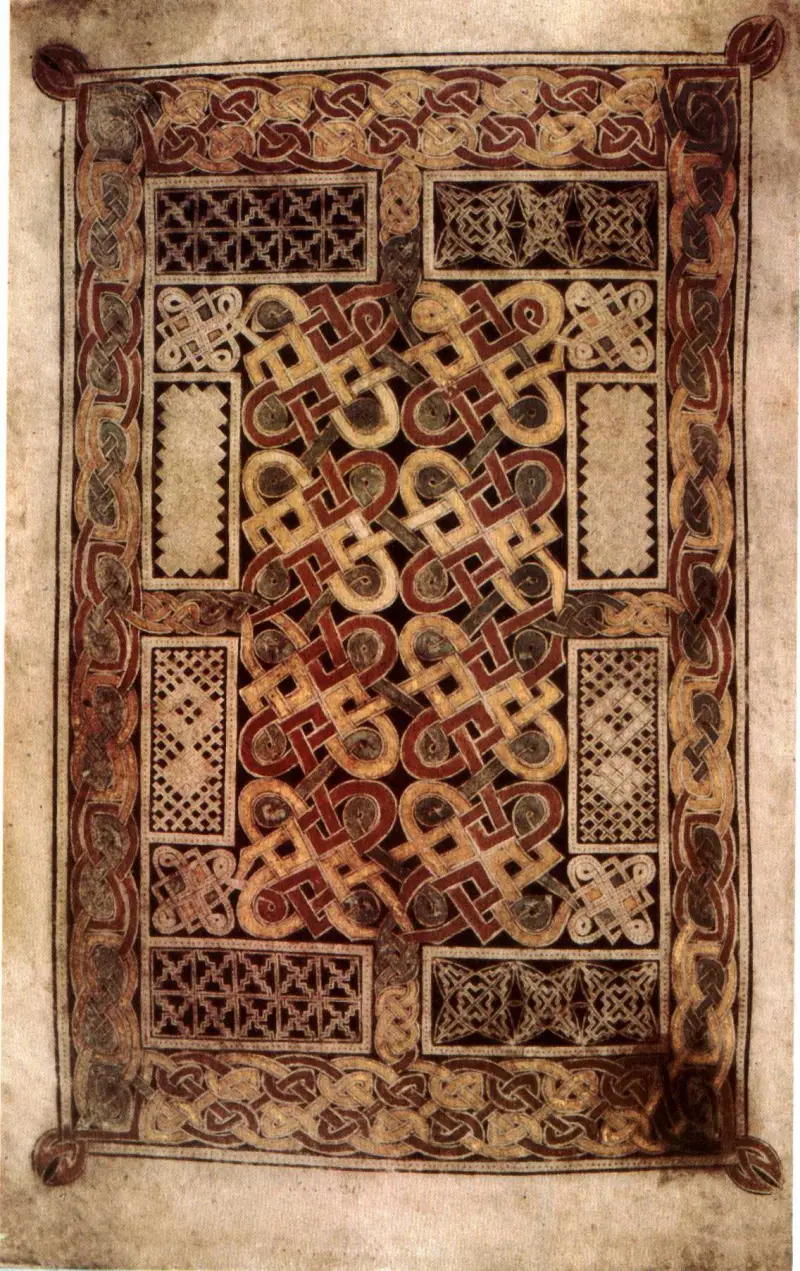
"Carpet Page" "Books from Durrow". Trinity College Library, Dublin
The Amiatinian Codex or Codex Amiatinus (late 7th - early 8th century) is considered the oldest handwritten Bible in Latin. And it was created by the monks of Monquirmouth-Jarrow Abbey in the kingdom of Northumbria, after which it was sent as a gift to the Pope.
It’s funny that this book weighs like a good sack of cement: 30–35 kg and contains 1 sheets of parchment, of which 040 have reached us.
Created at the end of the 7th - beginning of the 8th century, this manuscript is kept today in the Laurentian Library in Florence. The illustrations in it are bright and colorful.
There is a preface written in gold ink on purple paper, a luxury reserved only for the most important texts intended for emperors and popes. There are Covenant diagrams based on the works of St. Jerome and St. Augustine.
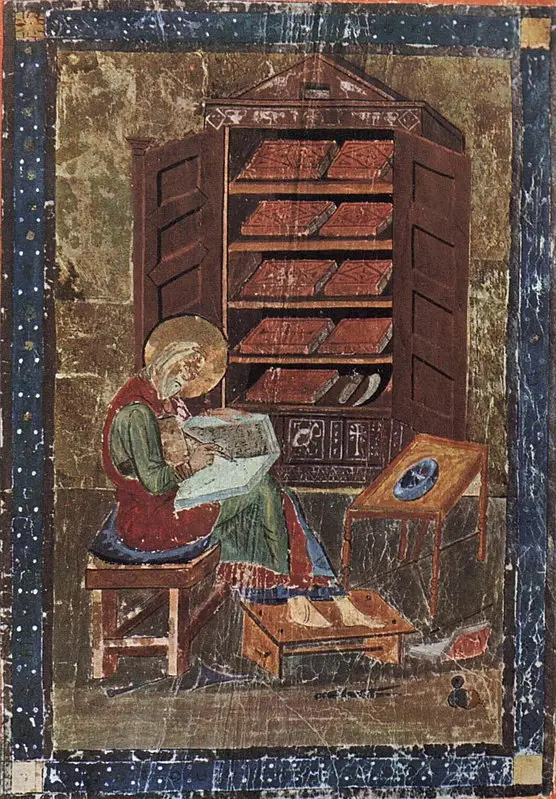
Thumbnail on page 5, which opens the text of the “Old Testament” in the Codex Amytianus. Depicts Ezra** as a monk-scribe. Laurentian Library, Florence
The Lindisfarne Gospel (c. 700–715) was produced on the “holy island” of Lindisfarne within the walls of St. Cuthbert's monastery and contains the four canonical Gospels of the New Testament. Written in Latin. And it also has carpet pages with Celtic crosses framed by fantastical birds, bird and animal designs, and bright half-page initials outlined in red dots.
Inscriptions in small print are visible between the lines on the pages. This is a translation of the Gospels in Old English, made in the 10th century by Bishop Aldred of Lindisfarne. This, by the way, is one of the first translations of the Gospels into English. The Lindisfarne Gospel is now kept in the British Library in London.
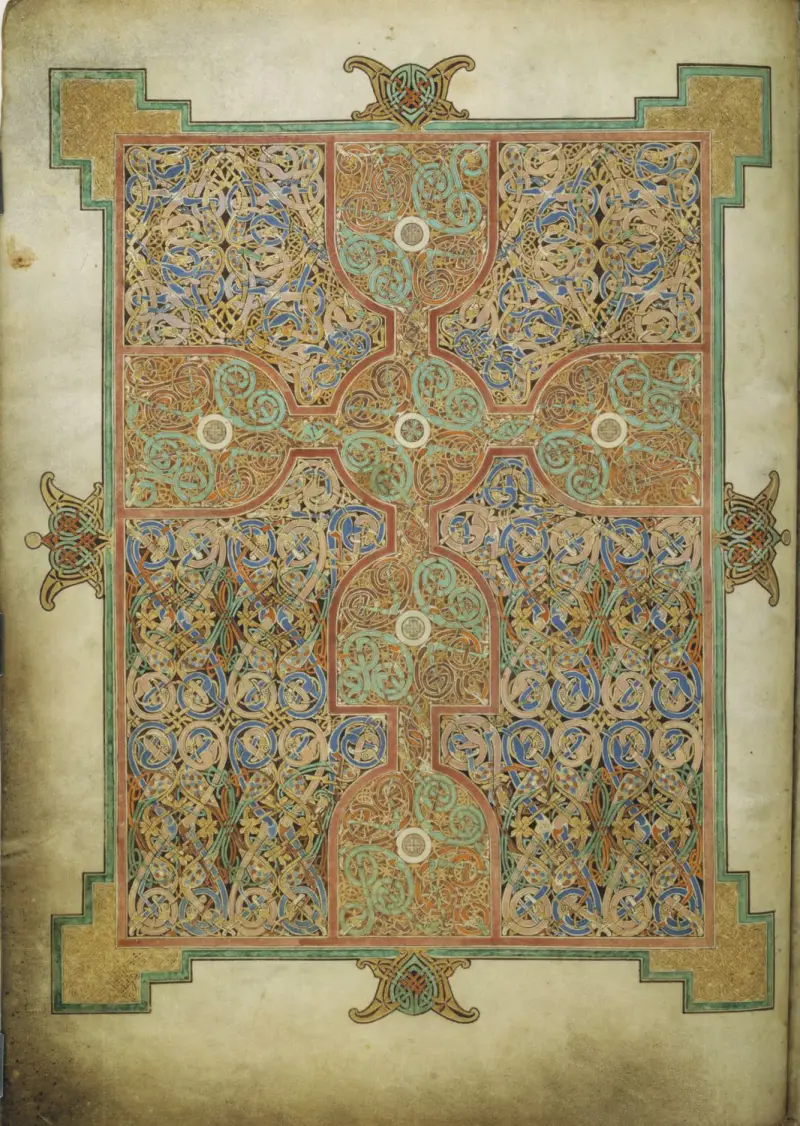
"Rug Page" from the Lindisfarne Gospel, preceding the text of the Gospel of Matthew. British Library, London
Next in time comes the Book of Kells.
The following is known about it: when the Vikings attacked the monastery of St. Cuthbert in 793, this book somehow miraculously survived, and it was transported “out of harm’s way” to Durham, in the northeast of England. That is, in 793 it was already written.
It is the Book of Kells that can be considered the most illuminated manuscript of the early Middle Ages. It was made by the efforts of many monks from the monastery of St. Columba on the island of Iona, but then, due to the constant threat from the Vikings, they transported it to the Monastery of Kells in Ireland.
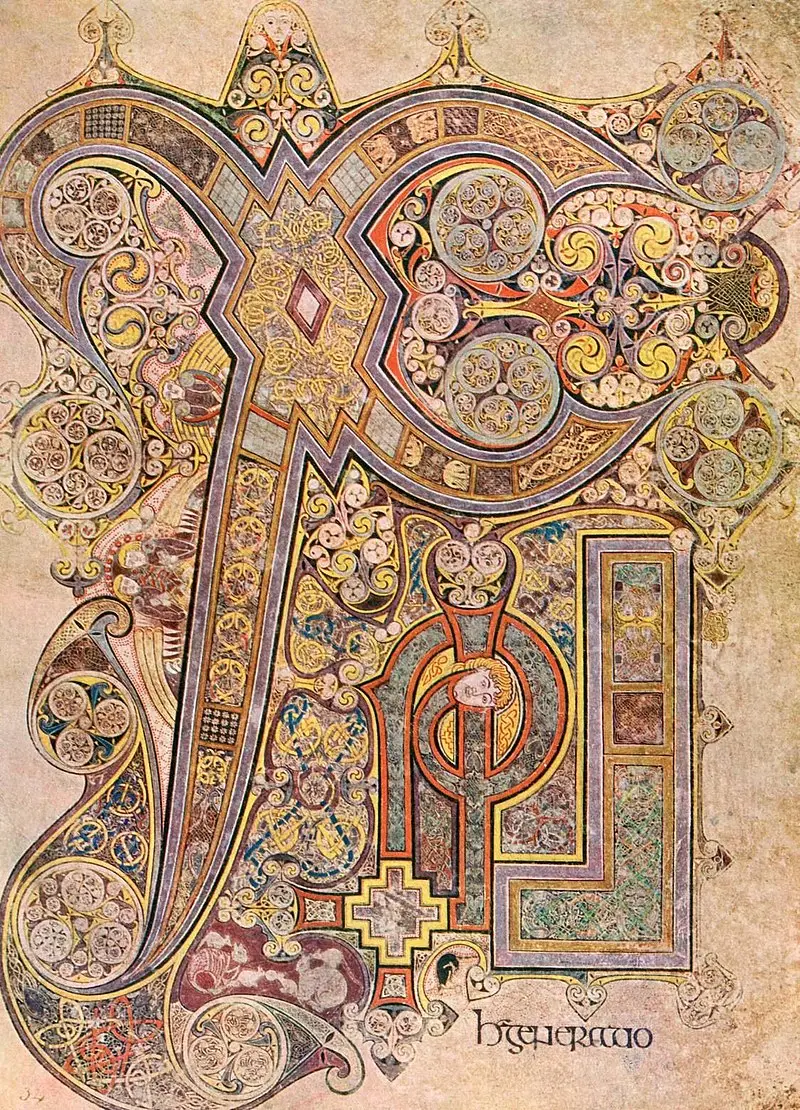
A page from the Book of Kells with an image of Chi-Rho - a monogram of the name of Christ, consisting of the two initial Greek letters of his name - Χ (chi) and Ρ (rho), crossed together. Trinity College Library, Dublin
The book is exceptionally richly illuminated, that is, decorated with colorful ornaments and colored miniatures.
And here’s what’s interesting and still defies explanation: on the pages of this manuscript there are decorative elements that can only be seen with a magnifying glass with tenfold magnification. In particular, such ornamental elements can be seen on initial letters and in some illustrations. But at that time lenses with such magnification did not yet exist.
So how did all this come to be drawn?
If we ignore the aliens, the descendants of the Atlanteans and the “antediluvian civilization” that created a unique, although not preserved, technique, there is only one acceptable explanation: the artist who designed it was... shortsighted. So he worked in this microscopic technique, because he simply could not work in another!
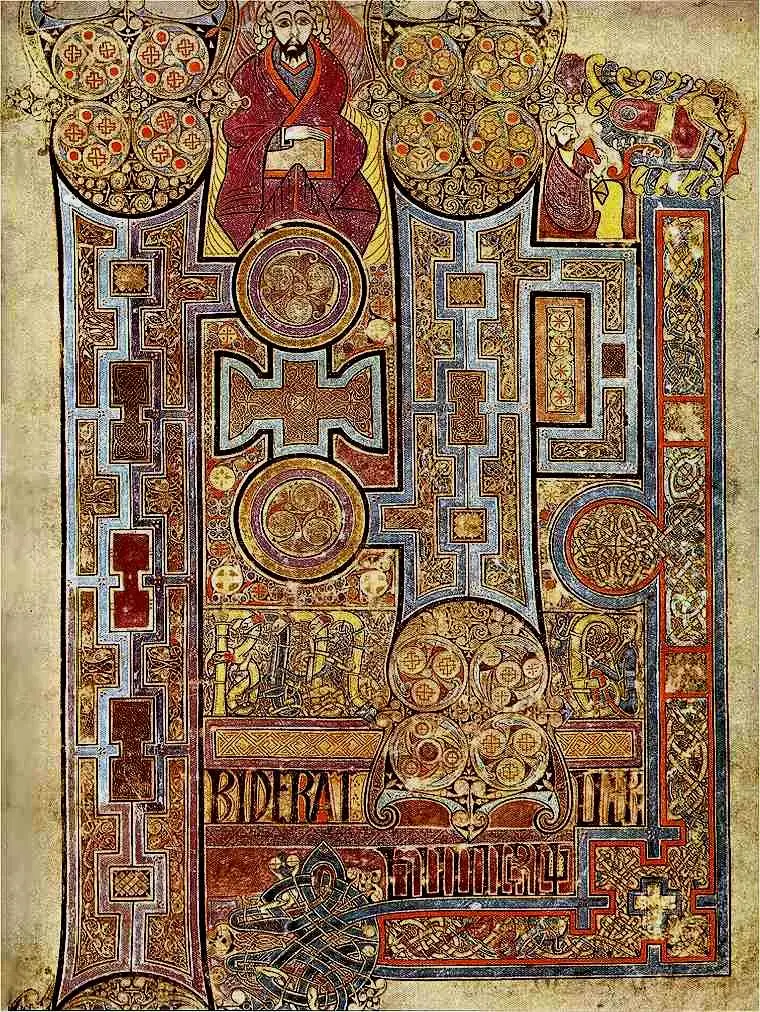
"Book of Kells". Page 292. The beginning of the Gospel of John. Trinity College Library, Dublin
One can imagine what an impression the pages of this book made on the believers of that time, who were not spoiled by the bright and colorful images around them, when they had the opportunity to look at it. For them it was a real miracle, so it is not at all surprising that they believed in their holiness and the divine inspiration of the monks who created it.
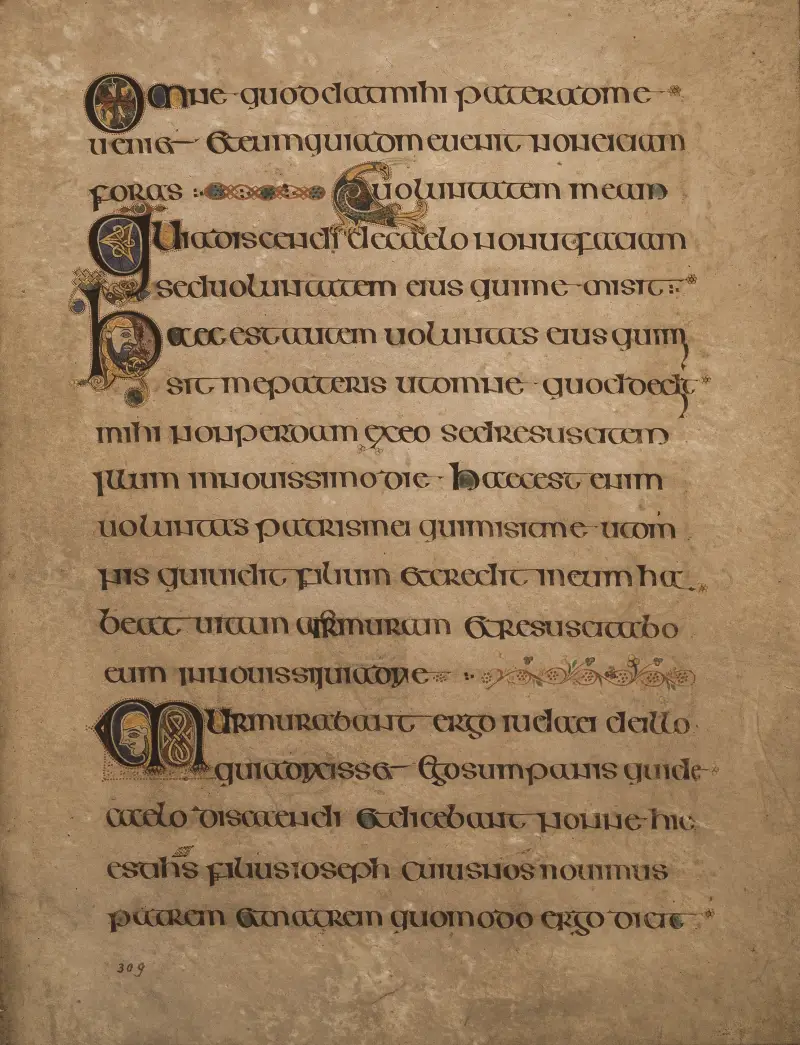
Page with the text of the Book of Kells. Trinity College Library, Dublin
By the way, the adventures of the Book of Kells are reflected even in... modern animation!
In 2009, director Tomm Moore shot the full-length color cartoon “The Mystery of Kelle”, the plot of which centers on story rescue and completion of the Book of Kells at the beginning of the 9th century.
* Uncial – consisting entirely of capital letters. Commonly used in the 4th–8th centuries AD by Latin and Greek book scribes.
** Ezra - a biblical character from the Aaronic family, a pious and learned priest who lived in Babylon under King Artaxerxes. In the seventh year of his reign, he received permission to go to Jerusalem and take with him all the Jews who wanted to return to their homeland, as well as priests, Levites, singers, etc. 1 people went to accompany Ezra to Judea.
Information